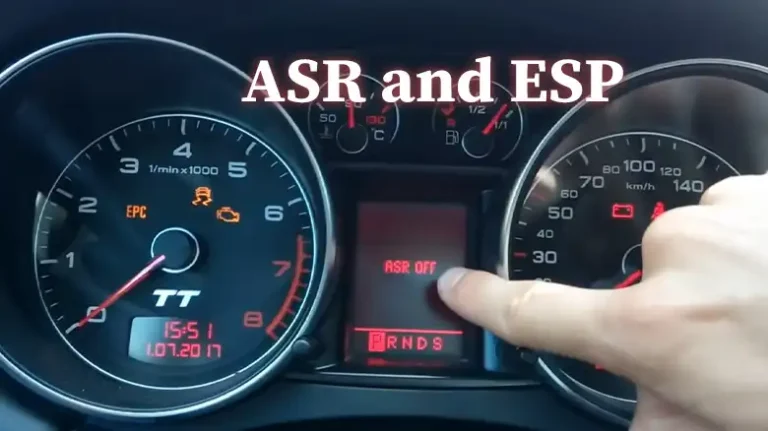How Does Brake Fluid Level Sensor Work? Know This and That
As you’re here, I assume that you’re eager to know about the functionality of Brake Fluid Level Sensors. I’m about to explain a specific part of automotive safety, where brake fluid level sensors quietly stand guard over your well-being. These unassuming yet indispensable components are the unsung heroes of your vehicle, ensuring that your brakes work seamlessly.
A brake fluid level sensor is an apparatus that oversees the brake fluid’s quantity within a vehicle. Typically, it is positioned within the brake fluid reservoir, a small container situated beneath the car’s hood.
In this in-depth exploration, I’ll break down the intricacy of brake fluid level sensors, emphasizing their crucial role in keeping you safe on the road. So, take a few minutes and read the entire post.

How Brake Fluid Level Sensors Work: Float Sensors and Reed Switch Sensors
Before anything else, let’s start with the main topic to make things more convenient. Let’s unravel the fascinating world of brake fluid level sensors, where two distinct mechanisms serve a common purpose – detecting low brake fluid levels.
Float Sensors
Float sensors employ a beautifully simple yet highly effective design. Picture a float, typically made of plastic or foam, serenely floating on the surface of your brake fluid within the reservoir. This float is ingeniously connected to a switch. As your brake fluid level drops below a predetermined threshold, the float gracefully descends with it, causing the switch to open. This seemingly straightforward movement sets in motion a chain of events. The open switch sends an electrical signal to your vehicle’s onboard computer, which responds promptly by illuminating a warning light on your dashboard. This unmistakable signal is your trusted companion, alerting you to the low brake fluid level, and urging you to take immediate action.
Reed Switch Sensors
Reed switch sensors add a magnetic twist to the equation. Within these sensors, two metal reeds are sealed in a glass tube. In their natural state, these reeds remain apart, maintaining an open circuit. However, when a magnet enters the scene, such as the magnet attached to the float in your brake fluid reservoir, the reeds become magnetized and close the circuit.
So, this is how reed switch sensors work –
- The magnet, residing on the float, elegantly floats atop your brake fluid.
- As your brake fluid level gradually decreases, the float gracefully descends, drawing the magnet closer to the reed switch.
- The magnetic attraction between the magnet and the reed switch ignites the reeds to close.
- The closing of the reed switch completes the electrical circuit, sending a signal to your vehicle’s computer.
- In a blink, your vehicle’s computer activates the dashboard’s warning light, your trusted ally in keeping you informed.
Both float sensors and reed switch sensors are highly reliable in their functions. However, like any mechanical component, they are not infallible and can experience malfunctions. In such cases, the warning light may fail to illuminate when your brake fluid level becomes critically low, potentially compromising your braking power.
The Vital Role of Brake Fluid Level Sensors
Brake fluid level sensors are the unsung heroes of your vehicle, playing a pivotal role in your safety on the road. Picture yourself driving down the highway, needing to brake suddenly to avoid a collision. You trust that your vehicle will respond promptly, and this trust hinges on the hydraulic system, with brake fluid as its lifeblood. Brake fluid transmits the force from your brake pedal to the brake calipers, ensuring you can stop when you need to. However, this system relies on an adequate supply of brake fluid. If it drops too low, you risk reduced stopping power and even brake failure.
This is where brake fluid level sensors step in as vigilant protectors, monitoring the fluid level. When the level drops, it triggers the dashboard warning light, alerting you to take action. Your prompt response, such as adding more brake fluid or seeking professional inspection, ensures your brakes are reliable when you need them most. These sensors act as your unseen safety net, always on duty to safeguard your well-being on the road.
Conclusion: Safeguarding Your Journey
In conclusion, brake fluid level sensors are unsung heroes, vigilantly ensuring your safety on the road. These sensors silently watch over your brake fluid levels, ensuring that your brakes operate smoothly and reliably. Understanding the inner workings of these sensors is crucial for appreciating the importance of maintaining the correct brake fluid levels in your vehicle. Whether your vehicle relies on float sensors or reed switch sensors, the goal remains the same: to maintain a safe and efficient braking system, ensuring your safety on every adventure down the road.





